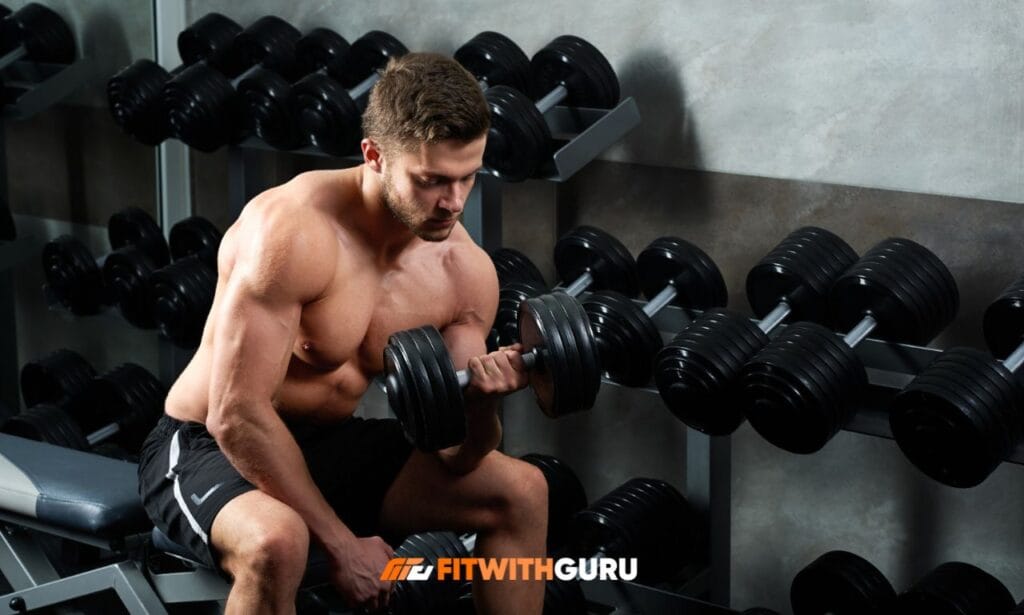Full body strength training is the key to unlocking your total physical potential. By engaging all the major muscle groups in your body, this type of workout can help you build strength, endurance, and power efficiently.
Whether you’re looking to enhance athletic performance, lose weight, or simply improve your fitness, full-body strength training is the most effective way to achieve your goals. In this article, we’ll break down everything you need to know about full body strengths training, from the basics to advanced techniques, to ensure you get the most out of your workout routine.
What is Full Body Strengths Training?
Full body strength trainings refers to exercises that engage all the major muscle groups in one workout session. This type of training is designed to build strength, improve muscle tone, and increase overall power by targeting the chest, back, legs, arms, shoulders, and core.
Unlike isolated training that targets one muscle group at a time, full body strength training workouts are structured to offer a comprehensive approach to fitness, giving you a balanced and functional body.
Benefits of Full Body Strength Training
Full body strengths training provides numerous benefits that extend beyond just building muscle. Here are some of the most significant advantages of incorporating full body strength trainings into your routine:
1. Enhanced Muscle Growth and Strength
Full body strengths training targets all major muscle groups, leading to increased muscle mass and overall strength. This type of training allows you to lift heavier weights, ultimately improving both your power and performance in various activities.
2. Better Fat Loss and Improved Metabolism
When you engage multiple muscle groups at once, you burn more calories both during and after your workout. This increases your metabolism and can help with fat loss over time.
3. Increased Functional Strength
Full body exercises are not only about aesthetics but also about improving functional strength. These exercises mimic movements used in everyday activities, helping to enhance your balance, coordination, and mobility.
4. Time Efficiency
One of the primary reasons many people prefer full body strength training is its efficiency. Since you work all major muscle groups in a single session, you can achieve more in less time compared to split routines, which often require multiple sessions throughout the week.
5. Injury Prevention
Full body strength training helps in building a well-balanced physique, reducing the risk of muscle imbalances that could lead to injury. A strong, well-conditioned body is less likely to experience strains or other injuries during physical activity.
Essential Exercises for Full Body Strength Trainings
If you’re looking to build total power and strength, these exercises should be staples in your full body strengths training routine. Each one targets multiple muscle groups, ensuring you’re getting the most out of your workout.
1. Squats
Squats are one of the best compound exercises for developing leg strength and power. They engage the quadriceps, hamstrings, glutes, and lower back, while also improving core stability. A strong squat can also help increase your mobility, flexibility, and overall athletic performance.

2. Deadlifts
Another compound exercise that works the entire body, but especially the hamstrings, glutes, lower back, and core, is the deadlift. This exercise is essential for building strength in the posterior chain and is crucial for overall power development.
3. Bench Press
A traditional upper body workout that tones the triceps, shoulders, and chest is the bench press. It is vital for building upper body strength and is one of the most effective ways to increase pushing power.
4. Pull-Ups
A bodyweight exercise that works the arms, shoulders, and back is the pull-up. They are highly effective for building upper body strength and improving posture. Incorporating pull-ups into your routine helps to develop pulling power and balance in the upper body.
5. Lunges
Another great lower body exercise that targets the quadriceps, hamstrings, glutes, and calves. Lunges also engage the core for stabilization, which helps improve balance and coordination.
6. Planks
One of the best exercises for strengthening the core is the plank. It targets the abdominals, lower back, and shoulders. A strong core is essential for maintaining stability during other strength training exercises, as well as for overall posture and functional movements.
7. Overhead Press
The overhead press, also known as the shoulder press, targets the shoulders, triceps, and upper chest. This exercise is crucial for building shoulder strength and improving upper body pushing power.
8. Bent-Over Rows
Bent-over rows target the back, biceps, and shoulders. This exercise helps to improve posture and develop pulling strength, which is essential for various athletic activities.
9. Leg Press
The leg press machine is a great alternative to squats, especially for beginners or those with mobility issues. It targets the quadriceps, hamstrings, and glutes, providing a safe and effective way to build leg strength.
10. Dumbbell Rows
Dumbbell rows are a great exercise for strengthening the back, shoulders, and arms. This movement helps to develop unilateral strength, ensuring that both sides of your body are equally strong.

How to Structure a Full Body Strength Training Routine
When designing your full body strengths training routine, the goal is to target all the major muscle groups without overworking any particular area. To get you started, here is an example weekly schedule:
Beginner Full Body Strength Training Routine (3 Days per Week)
- Day 1:
- Squats
- Bench Press
- Deadlifts
- Pull-Ups
- Planks
- Day 2:
- Lunges
- Overhead Press
- Bent-Over Rows
- Dumbbell Rows
- Leg Press
- Day 3:
- Squats
- Bench Press
- Deadlifts
- Pull-Ups
- Planks
Intermediate/Advanced Full Body Strength Training Routine (4 Days per Week)
- Day 1:
- Squats
- Deadlifts
- Pull-Ups
- Lunges
- Core exercises
- Day 2:
- Bench Press
- Overhead Press
- Bent-Over Rows
- Dumbbell Rows
- Core exercises
- Day 3:
- Squats
- Deadlifts
- Pull-Ups
- Lunges
- Core exercises
- Day 4:
- Bench Press
- Overhead Press
- Bent-Over Rows
- Dumbbell Rows
- Core exercises
Full Body Strengths Training Tips for Maximum Results
To get the most out of your full body strength training routine, here are a few essential tips:
1. Focus on Form and Technique
Proper form and technique are critical to preventing injuries and maximizing the effectiveness of your exercises. Good form should always come before heavy lifting.
2. Use Progressive Overload
To continue progressing in strength and muscle growth, you need to challenge your body over time. Gradually increase the weight, number of sets, or repetitions in your exercises to ensure continuous improvement.
3. Allow Adequate Rest Between Sessions
Full body strength training requires significant energy and effort from all major muscle groups. Ensure you give yourself enough time to recover between sessions, typically 48 to 72 hours, to avoid overtraining.
4. Incorporate Cardiovascular Exercise
While full body strength training is fantastic for building muscle, combining it with cardiovascular exercise can help improve overall fitness, endurance, and fat loss. Consider adding activities like running, cycling, or swimming to your routine.
5. Stay Consistent
Consistency is the key to any successful fitness program. Stick to your full body strengths training routine and make adjustments as needed to keep progressing toward your goals.
Frequently Asked Questions
1. How often should I do full-body strength training?
For beginners, 2-3 times per week is sufficient. More advanced individuals can increase to 4 times per week, ensuring proper rest between workouts to allow muscle recovery.
2. Can full-body strength training help with weight loss?
Yes, full body strength trainings can aid in weight loss by increasing muscle mass and boosting metabolism. Combined with a proper diet, it can help you burn fat and improve your overall body composition.
3. Is full body strength training suitable for beginners?
Absolutely! Full body strength trainings is a great option for beginners as it helps develop a balanced physique while targeting all major muscle groups. As you get stronger, progressively increase the intensity of your workouts by starting with lesser weights.
4. How long should a full body strength trainings session be?
A typical full-body strength training session lasts between 45-60 minutes, depending on the number of exercises and sets you perform. Make sure to include warm-up and cool-down periods to reduce the risk of injury.
5. Should I focus on full-body strength training or split training?
It depends on your goals. Full body strength training is ideal for overall strength, power, and efficiency, especially if you’re limited on time. Split training can be useful for targeting specific muscle groups if you want to focus on building size in a particular area.
Conclusion
Full-body strength training is a highly effective way to build strength, power, and muscle across all major muscle groups. By incorporating compound exercises, proper form, and progressive overload, you can achieve impressive results in less time compared to split routines.
Whether you’re a beginner or an experienced lifter, full body strength trainings can help you reach your fitness goals faster. Stay consistent, prioritize recovery, and enjoy the benefits of a stronger, more powerful body.

